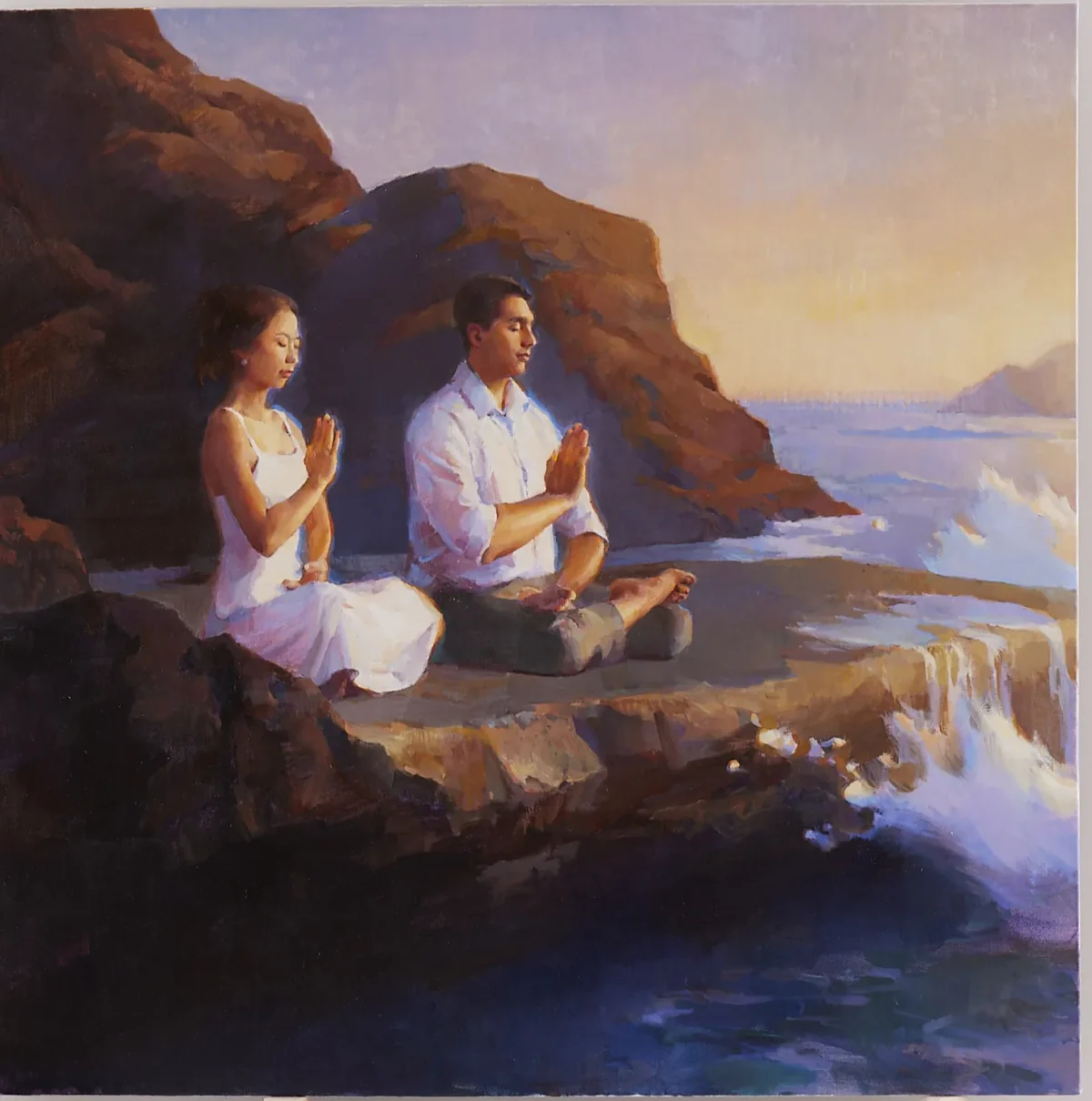In an interview with NTD, Renae Wang, an art instructor from Laguna College of Art and Design, offered a profound exploration of the intricate process of crafting realist oil paintings. Ms. Wang shared insights on selective detailing and provided valuable advice for aspiring artists, also unveiling the inspiration behind her competition submission—a captivating oil on canvas piece capturing meditating amid the chaotic waves.
Kevin: Joining me now is Renae Wang, an instructor at Laguna College of Art and Design, to learn more about realist oil painting, and what makes it unique. Renae, thank you so much for joining us today.
Renae Wang: Thanks for having me, Kevin.
Kevin: So what goes into making a realist oil painting?
Ms. Wang: It’s a great question, and I would say for each artist, the process is very different. But obviously, to begin with, you will have solid foundational training, usually a good piece of art has great composition, which really requires a lot of sketching. And I would say, many artists will do multiple studies of the same painting before actually beginning the painting process—there will be a lot of sketches, color studies, value studies, studies of composition before actually delving into painting. So I think the prep work is really a big part of it.
Kevin: That’s amazing. And I see that there are just so many principles that need to be followed in creating a realistic work. I’ve noticed even just the details like the reflection of light on a fingernail, getting down to that nitty-gritty detail … how do you go about creating something like that, and paying attention to all these things at once?
Ms. Wang: That’s a great question! I would say a good piece of art has a hierarchy, which is basically what you want the viewer to focus on. And I would say art with a crazy amount of detail is not necessarily good, because it doesn’t really tell the viewer where to look at. So a good piece of realist art, in my opinion, puts detail in really selectively at the most important aspect—the focal point of the painting, basically—that’s giving the viewer a direction of where to look at, and what’s important about that piece of painting, instead of just kind of scattering detail everywhere in the painting.
Kevin: So tell us a little bit more about the painting that you submitted to the competition.
Ms. Wang: Yeah, so this is oil on canvas, that I’ve done—actually cutting a little close to the deadline because I found out about the competition a little later into the process. So I basically, for many days, just got up in the morning, started painting, and I worked way into the night. But I was really glad that I could get it done and submitted it into the competition. So this is a painting of me and my fiancé and now husband. At the time, we took our engagement photo at Laguna Beach, and we were meditating on these rocks. And we’re actually getting splashed with the waves. But I just thought the scenery and the lighting is really beautiful. And after finishing the painting, I could see that there’s that sense of peace amidst the chaos. And we’re in this environment, we’re getting splashed by the waves, but we try to remain, I would say, firm and be at peace.

Kevin: Being unmoved, so to speak!
Ms. Wang: Yeah, exactly!
Kevin: That’s really great. And so in this piece, what were you trying to draw the attention to?
Ms. Wang: I would say it’s definitely the figure: I emphasized those figures, in terms of the design of light and color. So I use more saturated colors and a lot of oranges and pinks in the skin tone. Also, I put some cool tones in the background behind the figure just to emphasize the warmth of the skin. And I tried to give the environment a little bit more atmosphere by giving them lower contrast, in terms of the waves and the rocks. And I put a lot of contrast on the figure, just helped to put the focal point on the two figures.
Kevin: So right before we wrap up here, Renae, what advice do you have for aspiring realist painters?
Ms. Wang: Yeah, I would say, first of all, obviously, putting in hard work always pays off. And I don’t even live up to the standard! But if you can take some time out of every single day to make art, no matter how busy you are, I would say you’ll be on the right track. And then it’s to find like-minded artists. Find organizations like the NTD Painting Competition, join art clubs that promote realist art to make friends with other artists that have a similar aspiration. And you can learn a lot from them. And I would say, nowadays, I believe that you don’t need to, for example, go to an art school to get traditional training. There are a lot of great resources online, and things like workshops and ateliers. So studying realist art is not something that would break your budget. So there are just so many ways for one to improve the skill. But I would say yeah, hard work is the most important thing.
Kevin: And it sounds like what you’re saying a community can be so important for people working on this art form. Renae, thank you so much for your time.
Ms. Wang: Thank you, Kevin, it’s great to be on here!

